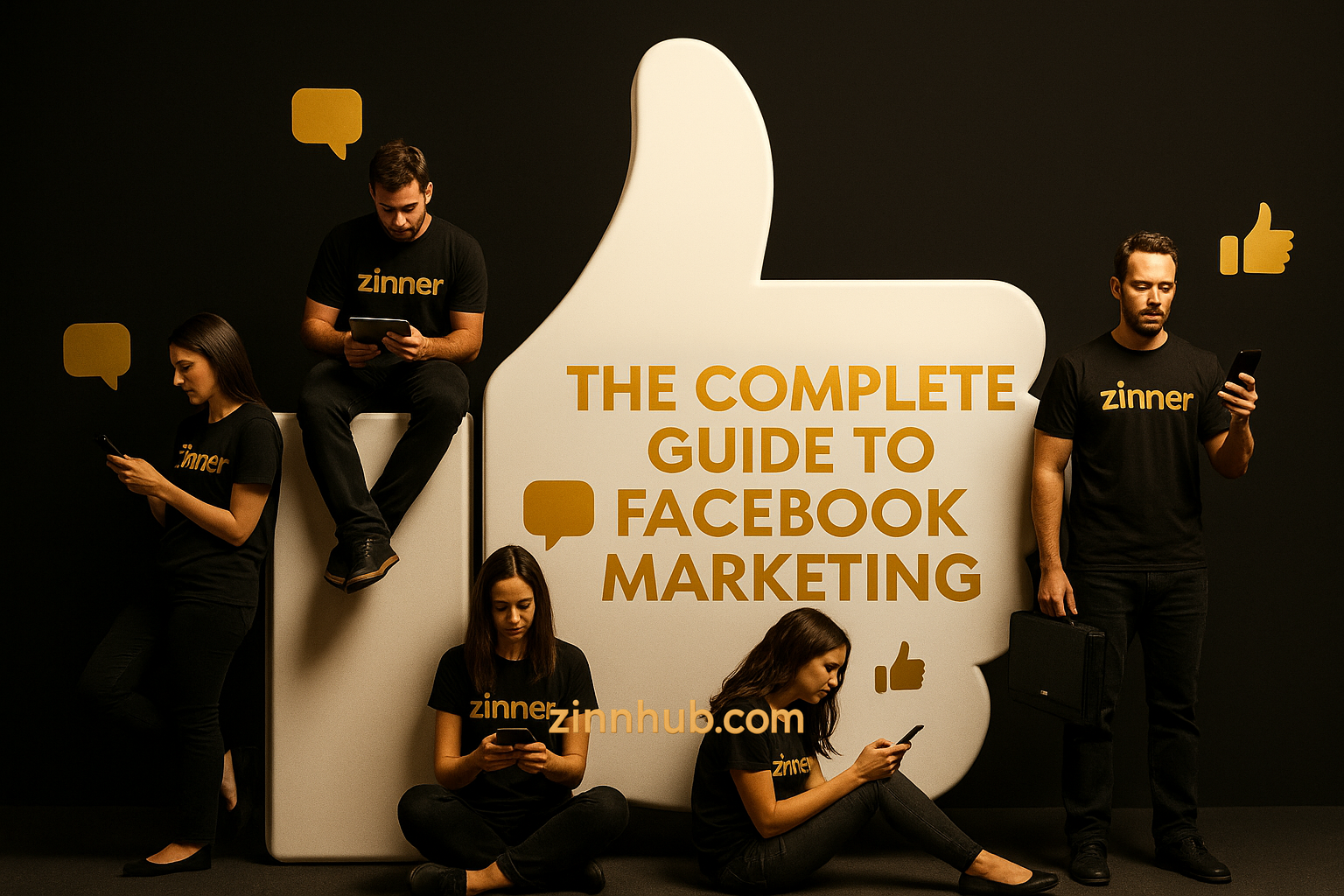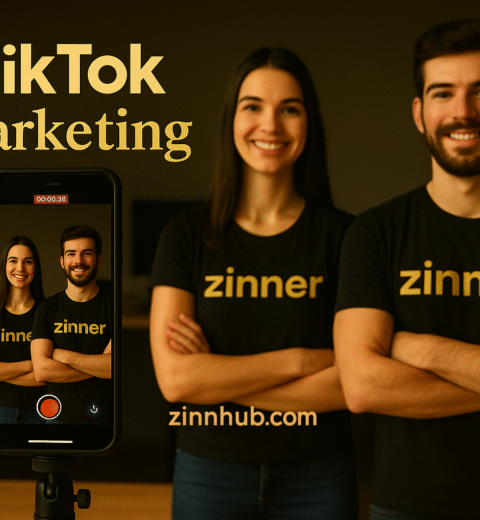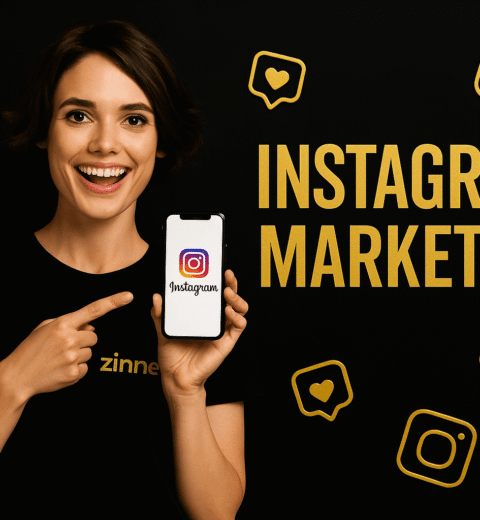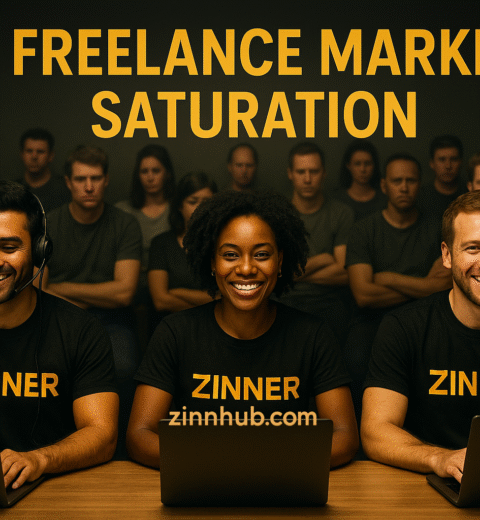Table of Contents
- Stats That’ll Make You Rethink Facebook Marketing
- The Facebook Ecosystem (It’s Not Just Facebook Anymore)
- Understanding the Algorithm (And Why It Actually Likes Small Businesses)
- Why Consistency is Your Secret Weapon
- Building Your Organic Content Strategy
- The £5-a-Day Facebook Ad Strategy That Actually Works
- Facebook Groups: Where Real Business Happens
- Video Marketing When You’d Rather Hide
- Advanced Strategies for Scaling
- Facebook Pixel Changes Everything
- Measuring facebook Success
- 10 Common Facebook Marketing Mistakes That Kill Results
- Real Success Stories from Real People
- Your 30-Day Quick Start Plan
- The Future of Facebook Marketing
- Your Next Steps
- Facebook Marketing Questions Answered
- How much should I spend on Facebook ads as a small business?
- How often should I post on Facebook?
- What’s the best time to post on Facebook in the UK?
- Do Facebook ads work for service-based businesses?
- How do I increase my organic reach on Facebook?
- Should I use my personal profile or create a business page?
- How do I handle negative comments or reviews?
- Is Facebook marketing worth it for B2B businesses?
- How do I measure Facebook marketing ROI?
- What’s the biggest Facebook marketing mistake to avoid?
- Can I succeed on Facebook without showing my face?
- How do I compete with bigger businesses on Facebook?
Let’s imagine you’ve just posted what you’re certain is Facebook marketing gold on your page. A witty caption, stunning visuals, maybe even a cheeky emoji or two. You sit back, refresh the page… and tumbleweeds roll past your engagement metrics. Sound familiar?
Here’s the thing: Facebook marketing isn’t dead. With over 3 billion monthly active users (that’s 37% of the world’s population), it’s very much alive. But it has evolved into something far more sophisticated than posting and praying.
If you’re a freelancer, small business owner, or what we at Zinn Hub Marketplace like to call a ‘Zinner’ (someone who actually gets things done), this evolution is brilliant news. Why? Because while big brands are stuck in corporate committee hell, you can move fast, be human, and actually mean it.
Stats That’ll Make You Rethink Facebook Marketing
I know what you’re thinking. “Facebook is for old people now. Everyone’s on TikTok.” Can we just put this tired myth to bed once and for all? The data tells a completely different story.
Facebook Marketing Statistics
And about those “Old Boomers” everyone keeps banging on about? They’re literally decision-makers with disposable income. They’re the ones hiring freelancers like us. They’re buying from small businesses. They Are Your Ideal Clients.
The Facebook Ecosystem (It’s Not Just Facebook Anymore)
Facebook in 2025 isn’t just about the main platform anymore. It’s evolved into a complete ecosystem that includes Instagram for visual storytelling, WhatsApp Business for customer service, Messenger for direct communication with 2.96 billion users, and the Audience Network that extends your reach beyond Facebook itself. Everything is interconnected, and when you understand how to use this ecosystem properly, it becomes incredibly powerful for small businesses.
Think about it – instead of managing four separate strategies, you’re running one coordinated campaign across multiple touchpoints. Here’s what you’re actually getting access to:
- Instagram – Cross-post to reach 2 billion monthly users with 23% higher engagement rates than Facebook alone. One Zinner posts her Tuesday tips to both platforms and reaches 5,000 on Facebook + 3,000 on Instagram with the exact same content. That’s 8,000 people for the effort of one post. 👉 Instagram Marketing Deep Dive
- WhatsApp Business – Forget email’s 20% open rate. WhatsApp messages see 98% open rates and 45% response rates. Customer service queries get resolved 70% faster, and people are 5x more likely to buy after a WhatsApp conversation than an email exchange.
- Messenger – With 2.96 billion users and 80% open rates within the first hour, Messenger isn’t just for chats. Messenger ads get 3x higher conversion rates than regular Facebook ads, and automated responses can save you 4+ hours weekly on repetitive questions.
- Audience Network – Your ads don’t stop at Facebook. They appear across 50,000+ websites and apps, extending your reach by 16% beyond Facebook/Instagram. This typically means 20% lower cost per acquisition because you’re catching people where they already are, not interrupting their social media time.
What really surprises most people is that Facebook ads can still reach over 2.11 billion people globally, and the average user clicks on 12 ads per month. That’s not a platform in decline – that’s a marketplace where people are actively engaging with businesses. Add to that the fact that 62% of social commerce buyers use Facebook for purchases, and you start to see why ignoring Facebook in 2025 is like refusing to open a shop on the high street because you prefer the aesthetics of a country lane.
Understanding the Algorithm (And Why It Actually Likes Small Businesses)
The Facebook algorithm has become something of a boogeyman in marketing circles. Everyone complains about it, few understand it, and most people think it’s designed to work against them. But here’s what nobody tells you: the algorithm actually favours small businesses and individual creators over big brands.
Think about it from Facebook’s perspective. They want content that keeps people on the platform, and what keeps people engaged? Authentic, interesting content from real humans, not polished corporate broadcasts.
Here’s what the algorithm prioritises in 2025:
🚀 Algorithm Priorities 2025 🚀
Your advantages as a small business? You can respond instantly, while big brands need legal approval. You can jump on trends immediately. You can show real behind-the-scenes content that performs 38% better than polished corporate posts. You’re literally built for what the algorithm wants.
Why Consistency is Your Secret Weapon
Now, I’m about to share something that goes against everything you’ve been told about social media marketing. The most successful small businesses on Facebook aren’t trying to go viral. They’re being brilliantly consistent and reliable.
Let me explain with what I call the Local Pub Principle. Think about your favourite local pub. You don’t go there because they completely renovate every month or have fireworks every Friday night. You go because you know exactly what you’re getting. The same friendly faces, the same atmosphere, and the same reliable quality.
Take my friend Lia Chen, a graphic designer from Liverpool:
- Posts “Design Tip Tuesday” every week at 10am
- Simple Canva tricks and colour theory basics
- Nothing groundbreaking or award-winning
- Engagement rate: 4.2% (60x the Facebook average)
- Result: Booked solid through 2025
- 80% of clients found her through these consistent weekly posts
Why does this work? Because her 3,000 followers trust her consistency. They know that every Tuesday morning, while having their second coffee, Lia’s going to teach them something useful. It’s become part of their routine.
Building Your Organic Content Strategy
I know what you’re thinking – “But organic reach is dead!” Yes, average organic reach has dropped to about 5.2% of your followers. But here’s the thing – those 5.2% are your most engaged fans, the ones most likely to become clients.

Instead of mourning the death of organic reach, smart freelancers are doubling down on serving their core audience brilliantly. I’ve developed what I call the MWFS Framework that actually works.
The MWFS Framework:
- Monday Motivation: Industry-specific insights (not generic quotes)
- Wednesday Wins: Real client results with permission
- Friday Failures: Mistakes you made and lessons learned
- Solution Saturdays: Solve one specific client problem
Generally recommended posting times:
- Peak engagement: Tuesday-Thursday tend to perform well
- Common sweet spots: 9-10 AM, 1-2 PM, 7-9 PM GMT
- Weekends: Lower engagement but less competition
- Important: Check YOUR Facebook Insights for when your specific audience is active
Every post needs this structure: Hook them in 3 seconds, build curiosity in 10 seconds, deliver value in 30 seconds, and end with a clear call to action. Your hook might be “The £5,000 mistake I see freelancers make” or “A client just asked me the smartest question” – something that makes people need to know more.
The £5-a-Day Facebook Ad Strategy That Actually Works
Everyone says you need thousands to make Facebook ads work. They’re wrong. Some of the most successful Zinners I know built thriving businesses spending just £5 a day on Facebook ads.
Let me share Tom Williams’ story, with his consent. He’s a freelance copywriter who was struggling with traditional networking. With just £150 per month (less than most people spend on coffee), he achieved remarkable results over six months.
Tom’s £150/month results:
- 847 email subscribers
- 23 discovery calls booked
- 7 new clients acquired
- £42,000 in project revenue
- ROI: 2,800%
His week 1 setup (total time: 2 hours):
- Install Facebook Pixel (10 minutes, free)
- Verify domain for better deliverability
- Upload email list (even just 50 emails works)
- Create simple ad graphics in Canva
His daily budget split was simple: £3.50 on warm audiences (website visitors, email list) and £1.50 on lookalike audiences. No complicated funnels, no expensive video production. Just screenshot testimonials (37% average click-through rate), simple 15-second phone videos, and before/after graphics showing improved copy.
Facebook Groups: Where Real Business Happens
While everyone’s obsessing over their page metrics, 1.8 billion people are having real conversations in Facebook Groups every month. These aren’t just casual chats; they’re people actively seeking solutions, asking for recommendations, and looking for experts exactly like you.
The key is what I call the 80/20 Group Strategy. You spend 80% of your time genuinely helping with no expectation of return and 20% strategically making your expertise visible.
Perfect Facebook Group characteristics:
- Size: 1,000-50,000 members (engagement sweet spot)
- Activity: 10+ posts daily minimum
- Moderation: Active but not oppressive
- Relevance: Your exact ideal clients participate
- Quality: Real discussions, not just promos
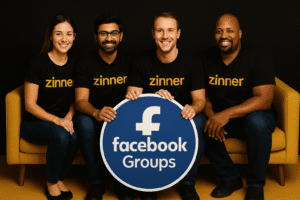
Carmen Rodriguez mastered this approach. She’s a VA specialising in systems for online coaches. She joined three relevant groups and spent six months just helping – answering questions, sharing resources, and celebrating wins. Never pitched. Never sent unsolicited DMs.
By month seven, she was getting 3-5 qualified leads weekly. People would tag her saying “You need to talk to Carmen, she’s amazing with this stuff.” She went from struggling to having a waiting list, all from 30 minutes daily in three groups.
Video Marketing When You’d Rather Hide
I get that the thought of being on camera makes you want to fake your own death and move to a remote island. But video content gets 135% more organic reach than photos on Facebook, and you don’t need to show your face.
No-face video options that work:
- Screen recordings: Show your process (47-second average view time)
- Time-lapses: Watch work happen (3.7% engagement rate)
- Animated explainers: Canva or Adobe Express (shared 2.3x more)
- Kinetic typography: Moving text and quotes (89% higher save rate)
The secret isn’t production value – it’s the hook. You have exactly three seconds to stop someone from scrolling past.
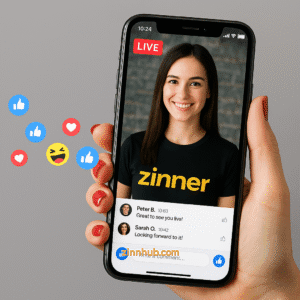
Hooks that stop the scroll:
- Questions: “Ever wondered why…?”
- Problems: “This mistake costs you £1000s…”
- Surprises: “Nobody talks about this…”
- Results: “3 clients in 7 days using…”
Keep videos 15-60 seconds, always add captions (85% watch on mute), and optimise for mobile with 4:5 or 9:16 aspect ratios. One freelance writer grew from 500 to 5,000 followers in six months using nothing but screen recordings of her editing process.
Advanced Strategies for Scaling
Once you’ve mastered the basics, it’s time to think strategically. The biggest mistake I see is people trying to convert cold audiences immediately. Instead, think of your Facebook marketing as a journey.
Your funnel approach should look like this:
Top of Funnel (50% of budget) Educational content for broad audiences. Success metrics: 10,000 reach per £50 spent, 1%+ engagement rate, 25%+ video completion.
Middle of Funnel (30% of budget) Case studies and testimonials for interested people. Success metrics: £2-5 per email signup, 2+ minutes on website.
Bottom of Funnel (20% of budget) Specific offers for warm audiences. Success metrics: 2-5% conversion rate, 3:1 ROAS minimum.
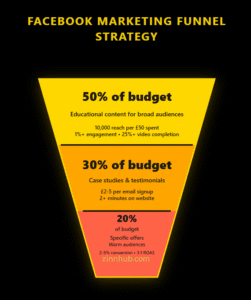
User-generated content changes everything:
- 4.5x higher conversion rates
- 50% lower acquisition costs
- 6.9x more engagement
Getting UGC is simple – ask at the moment of maximum happiness (right after delivering results), make it easy with templates, and create campaigns with branded hashtags that make people feel special.
Facebook Pixel Changes Everything
I know code makes most people’s eyes glaze over, but this one thing can transform your results. The Facebook Pixel can track who’s actually interested versus who clicked by accident. This code tells Facebook: “Hey, this person didn’t just click and leave – they stayed for 3 minutes and read 75% of the article. They’re actually interested!”
Now you can create Facebook audiences of only these engaged readers and show them your ads. Instead of wasting money on everyone who clicked, you’re only targeting people who genuinely care about your content.
Here’s the game-changing code:
javascriptfbq('trackCustom', 'EngagedReader', {
content_name: 'Your Blog Post Title',
read_depth: '75%',
time_on_page: '180 seconds'
});Getting Started With facebook Pixel
- First, go to Facebook Events Manager and create your Pixel (it takes 2 minutes)
- Copy the base Pixel code – it looks intimidating but you don’t need to understand it
- Paste it in your website’s header (most website builders have a spot for “tracking codes”)
Lia Chen uses this to track case study readers, then shows them discovery call ads. Result: Three new clients from one £100 campaign.
Setting this up:
- Takes 10 minutes
- Works through Google Tag Manager
- Your web person can do it easily
- Dramatically improves ad performance
Measuring facebook Success
Facebook gives you dozens of metrics. Most don’t matter. Focus on what I call the Money Metrics that actually impact your business.
The only metrics that matter:
- Cost per lead: Target £5-15 for services
- Lead-to-client rate: 10-20% is healthy
- Customer lifetime value: How much is each client worth?
- ROAS: Aim for 3:1 minimum
- Email list growth: Your most valuable asset
Weekly review checklist (20 minutes every Friday):
- Best performing content – why?
- Worst performing content – what failed?
- Cost trends – up or down?
- Audience growth rate
- Competitor activity worth noting
This simple weekly check-in helps you spot trends before they become problems and double down on what’s working.
10 Common Facebook Marketing Mistakes That Kill Results
After watching hundreds of small businesses navigate Facebook marketing, I see the same mistakes repeatedly. The good news? They’re all fixable.
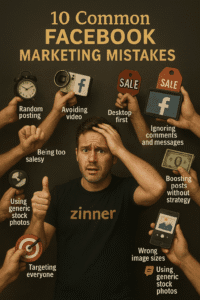
Mistake 1: Random posting People post whenever they remember, about whatever occurs to them.
Fix: Create monthly themes and weekly content buckets. Result: 67% higher engagement just from consistency.
Mistake 2: Avoiding video “I’m not good on camera” means missing 135% more reach.
Fix: Start with screen recordings or time-lapses. Result: Double your visibility immediately.
Mistake 3: Being too salesy Every post screaming “hire me!” kills trust.
Fix: Follow “Jab, Jab, Jab, Right Hook” – value three times before any ask. Result: 3x higher conversion rates.
Mistake 4: Desktop-first design Creating for computers when 98.5% use mobile.
Fix: Always preview on phone first. Result: 43% lower bounce rates.
Mistake 5: Ignoring comments and messages People comment or DM, then hear nothing for days (or ever).
Fix: Set phone notifications and respond within 2-4 hours. Result: 71% more likely to become customers.
Mistake 6: Boosting posts without strategy Throwing $20 at random posts hoping something sticks.
Fix: Only boost posts that already have organic engagement. Result: 5x better return on ad spend.
Mistake 7: Wrong image sizes Using square Instagram photos that get cropped weird on Facebook.
Fix: Use 1200×630 pixels for links, 1080×1080 for regular posts. Result: 47% more clicks just from proper formatting.
Mistake 8: Targeting everyone “My product is for everyone!” = reaching no one effectively.
Fix: Start with one specific audience (e.g., “working moms in Dallas aged 35-45”). Result: 83% lower ad costs.
Mistake 9: Giving up after one week “Facebook doesn’t work for my business” after 7 days of trying.
Fix: Commit to 90 days of consistent posting before judging. Result: 92% see significant growth by day 60.
Mistake 10: Using generic stock photos Those smiling businesspeople shaking hands? Everyone scrolls past.
Fix: Use real photos from your phone – even slightly imperfect ones. Result: 94% more engagement than stock photos. This one’s particularly powerful because it’s so counterintuitive – people think they need “professional” images when authenticity actually wins on social media.
Real Success Stories from Real People
Let me share three stories that prove this works for regular freelancers and small businesses.
Emily Watson, Brand Designer, Birmingham Emily was stuck in feast-or-famine cycles. Some months turning away work, others desperately networking for clients.
Her simple strategy:
- Design tips every morning at 9am
- Live critique sessions Fridays at 2pm
- Never missed a week for 6 months
Results:
- 500 → 4,800 followers
- 3-month project waitlist
- 150% rate increase (gladly paid)
- 90% of clients from Facebook
Her secret: “I post at 9 AM every day, even when I don’t feel like it.”
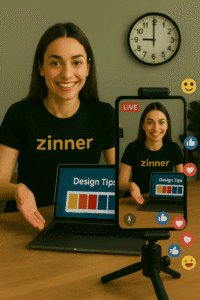
WordCraft Copy, Remote Competing with big agencies on a tiny budget seemed impossible. So they got ultra-specific with targeting.
Their approach:
- £150/month ad spend
- Targeted only businesses visiting marketing blogs
- Focus on specific UK cities
- Simple testimonial screenshots
90-day results:
- 342 email subscribers
- 18 discovery calls
- 6 retainer clients
- £4,200 monthly recurring revenue
Virtual Support Pro, London Instead of competing in the crowded VA market, she created a Facebook group for overwhelmed coaches. For six months, she just helped. No pitching, no promos.
By year’s end:
- 2,300 engaged members
- 15-20 inbound leads monthly
- Premium rate positioning
- £197 course sold to 400 people
Your 30-Day Quick Start Plan
Enough theory. Here’s exactly what to do over the next 30 days.
Week 1: Foundation (Days 1-7) Fix your basics first. Professional profile photo, clear cover image explaining what you do, compelling “about section”, and working contact info. Install Facebook Pixel (takes 10 minutes), research where your ideal clients hang out, and plan your content themes.
Week 2: Launch (Days 8-14) Start posting daily. Join three relevant groups. Launch your first £5/day ad. Respond to every comment. Don’t obsess over metrics yet.
Week 3: Optimise (Days 15-21) Test different posting times. Create your first video (screen recording is fine). Increase budget on winning ads. Consider going live. Start building your email list.
Week 4: Scale (Days 22-30) Double down on what works. Kill what doesn’t. Expand successful audiences. Plan month two based on learnings. Document everything.
The Future of Facebook Marketing
Facebook marketing in 2025 is evolving rapidly, but the core principles remain: be helpful, be consistent, and be human. What’s changing is how we execute these principles, and staying ahead of these trends can give you a massive advantage.
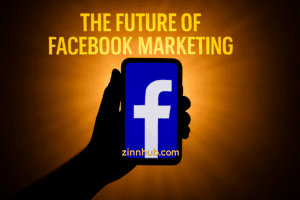
AI automation is getting scary good: Facebook’s Advantage+ campaigns now use AI to optimise everything from audiences to creative. But here’s the thing – it works best when you feed it quality data from a properly set up Pixel. Think of AI as your assistant, not your replacement. Use it to test 50 ad variations while you focus on strategy. One Zinner used AI to test different headlines and found a winner that increased conversions by 340%. Could they have found it manually? Maybe. But it would have taken months, not days.
Live shopping isn’t just for products anymore: Originally built for physical products, live shopping is evolving. Service providers are using it brilliantly – lawyers hosting live Q&As where viewers can book consultations, designers doing live website critiques with instant booking options, consultants running mini-workshops with live offers. The conversion rates are insane because people buy from people they trust, and nothing builds trust like live interaction.
AR is becoming surprisingly practical: Forget gimmicky filters. Practical AR is here. Interior designers letting clients visualise furniture in their space. Hair stylists showing different colours before booking. Personal trainers demonstrating form with AR overlays. Even service businesses are using AR business cards that come alive with video testimonials. It sounds futuristic, but the tools are already in Facebook’s Spark AR platform.
Privacy changes mean first-party data is everything: iOS updates killed much of Facebook’s tracking ability. The solution? Build your own data goldmine. Email lists, Messenger subscribers, WhatsApp business contacts – these are now more valuable than ever. Smart businesses are using lead magnets, Facebook groups, and Messenger bots to build owned audiences. When Facebook knows less, you need to know more.
Short video is eating everything: Reels aren’t just competing with TikTok – they’re reshaping how we think about content. But here’s what most miss: it’s not about dancing or trends. The winning formula is simple – hook in 3 seconds, deliver value in 30 seconds, leave them wanting more. One accountant grew from 1k to 50k followers with 30-second tax tips. No dancing, no trends, just value in bite-sized pieces.
What’s staying the same:
- Authentic content wins
- Consistency beats creativity
- Relationships drive revenue
- Value-first approach works
- Small businesses have advantages
Your Next Steps
Here’s what I know after years of watching freelancers succeed and fail with Facebook marketing: the platform works. The strategies work. The only variable is whether you’ll implement them.
While everyone complains about algorithm changes and decreased reach, smart business owners are quietly building thriving communities and consistent revenue streams. They’re not doing anything you can’t do. They’re just doing it consistently.
Start today. Pick one strategy from this guide and commit to it for 30 days. That’s it. One strategy, 30 days, track your results.
Because your ideal clients are on Facebook right now, scrolling through their feed, looking for someone exactly like you. The question is: will they find you?
Ready to transform your Facebook presence? Join thousands of Zinners already using these strategies to build thriving businesses. Your future clients are waiting.
Action steps:
- Save this guide now
- Choose ONE strategy to start
- Join the Zinn community
- Share your win with Zinn in the comments below
Remember: progress beats perfection. Your Facebook transformation begins with a single post.
Facebook Marketing Questions Answered
How much should I spend on Facebook ads as a small business?
Start with £5-10 per day. Tom Williams built £42,000 in revenue spending just £150/month. Focus on warm audiences first (website visitors, email list) before expanding to cold traffic. This minimises risk while you learn what works.
How often should I post on Facebook?
Quality beats quantity. Lia Chen posts once weekly and has a 4.2% engagement rate – 60 times the average. Whether daily or weekly, pick a schedule you can maintain long-term. Consistency matters more than frequency.
What’s the best time to post on Facebook in the UK?
Generally, Tuesday-Thursday at 9-10 AM, 1-2 PM, and 7-9 PM GMT tend to see good engagement. However, these are just general guidelines – your specific audience might be completely different. The best approach is to check your Facebook Insights to see when YOUR followers are actually online and test different times to find your sweet spot.
Do Facebook ads work for service-based businesses?
Actually better than for products due to higher lifetime values. Focus on building trust through testimonials and expertise before asking for consultations. Warm them up with valuable content first.
How do I increase my organic reach on Facebook?
Spark conversations, not likes. Ask questions, create polls, go live, respond quickly. Video gets 135% more reach. Participate in Groups where your ideal clients hang out.
Should I use my personal profile or create a business page?
Always use a business page for professional activities. Required for ads, provides analytics, maintains professionalism. Share business posts to personal profile for extra reach.
How do I handle negative comments or reviews?
Respond within 2 hours professionally. Take details private. Never delete unless it’s spam. Emily Watson turned her worst complaint into her best client through empathetic, transparent problem-solving.
Is Facebook marketing worth it for B2B businesses?
Yes – 74% of B2B decision-makers use Facebook regularly. Share educational content, join industry Groups, use precise ad targeting. They’re still people who scroll at lunch.
How do I measure Facebook marketing ROI?
Track cost per lead, conversion rates, lifetime value, and revenue generated. Use UTM parameters for accurate tracking. Most see positive ROI within 60-90 days following these strategies.
What’s the biggest Facebook marketing mistake to avoid?
Trying to sell immediately. Follow “Jab, Jab, Jab, Right Hook” – provide value three times before any sales pitch. Generates 3x higher conversion rates than constant promotion.
Can I succeed on Facebook without showing my face?
Absolutely. Use screen recordings, time-lapses, animations, testimonials. Many successful Zinners never appear on camera but build strong brands through consistent valuable content.
How do I compete with bigger businesses on Facebook?
Your superpower is being human and responsive. While corporations need approval for everything, you can engage authentically and immediately. Focus on niche communities where you can build genuine relationships.

